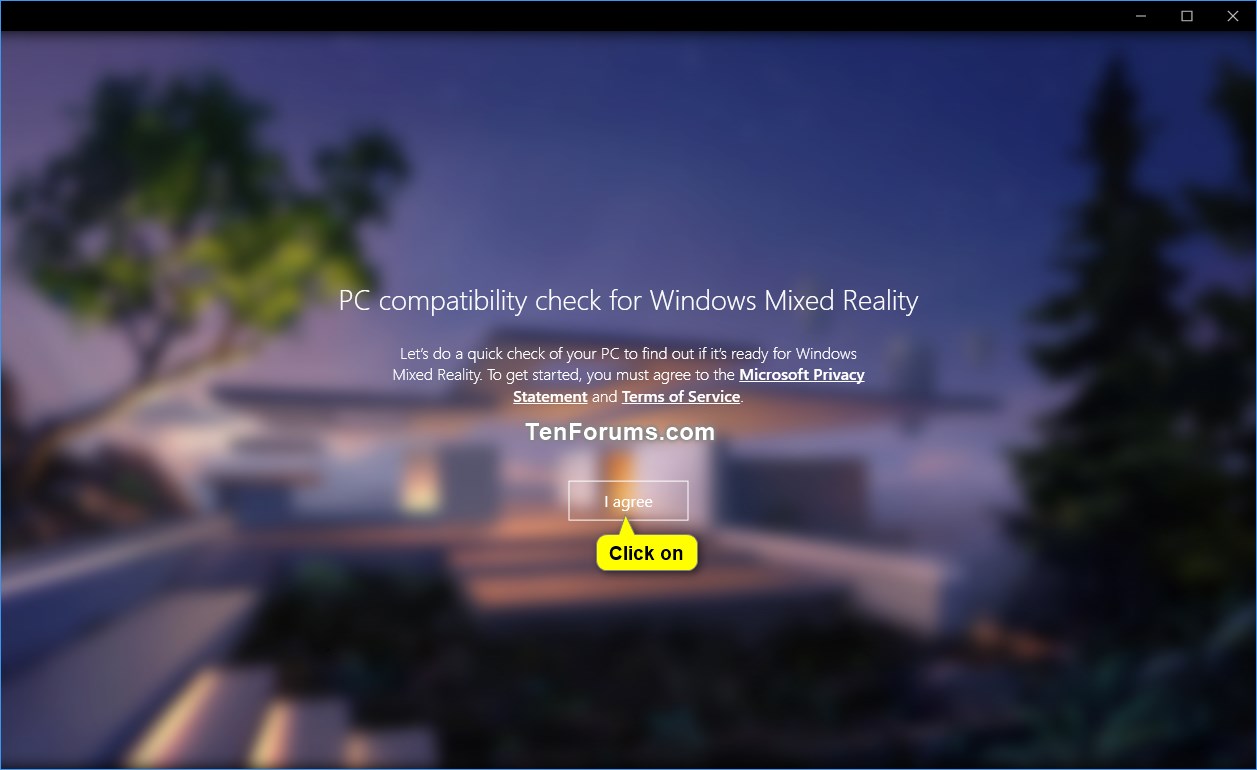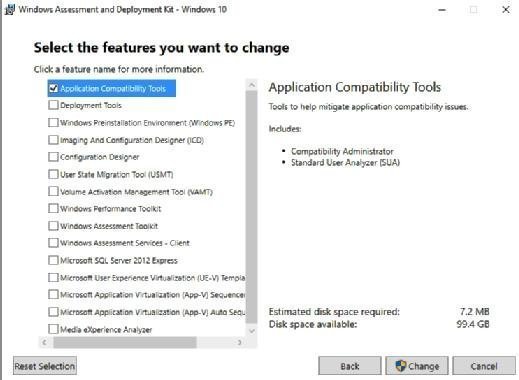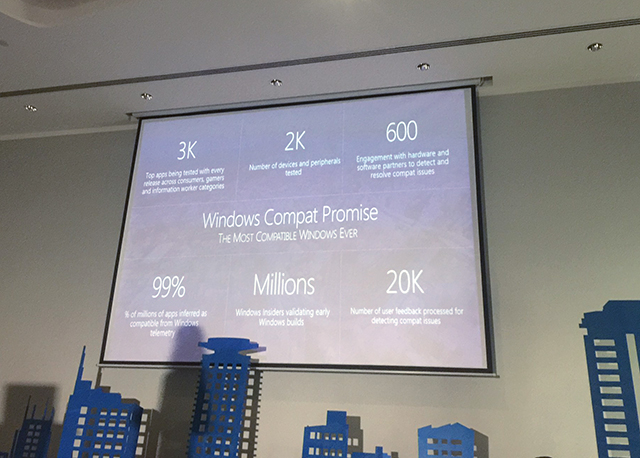In addition to increased reliability, the supported processors increase security capabilities at the chip level. These processors provide virtualization extensions and virtualization performance improvements. Windows 11 supports virtualization-based security which enables several security capabilities, including memory integrity, also known as hypervisor-protected code integrity . HVCI disables dynamic code injection into the Windows kernel.
HVCI also provides driver control and ensures that all drivers loaded meet a policy of allowed drivers set by Microsoft and the user. The United States Department of Defense requires virtualization-based security on Windows 10 for their devices. In partnership with our OEM and silicon partners, we will be enabling VBS and HVCI on most new PCs over this next year. And we will continue to seek opportunities to expand VBS across more systems over time. Windows 11 continues our strong commitment to compatibility. This means that devices can upgrade to Windows 11 and critical apps and devices will simply work.
Raising the Windows 11 minimum system requirements enables us to better support apps and hardware for drivers and devices. Feedback also shows us that unsupported hardware is more likely to have older drivers that are incompatible with new OS features such as VBS. Supported hardware also comes with modern drivers, which helps ensure not only the reliability we mentioned earlier, but also great hardware compatibility. We will start by creating a package for Windows 10 compatibility check. The source of this package must be the Windows 10 installation media.
The deployment option and command line is important here. If they are not set correctly you'll end up sending the complete installation media (including Install.wim) to the computers only for a compatibility check which is not really effective. Using our proposed methods, you'll be using about 250mb on the client drive instead of 5gb. If you have had the same installation for a long time, you might need to analyze and repair the current setup to fix missing or damaged files. Otherwise, during the upgrade process, the chances of running into issues will be high. Students and exam-takers downloading the test-taking software, Examplify, should review these Minimum System Requirements to ensure their devices are supported.
Examplify works with most modern computers, both Mac and Windows operating systems. Examplify will not run on Chromebooks, Android, or Linux operating systems. If you're unsure which version of Examplify you currently have, Windows users can see this help articleand Mac users can use this help article. For those who are using a PC that won't upgrade, and who aren't ready to transition to a new device, Windows 10 is the right choice.
We will support Windows 10 through October 14, 2025 and we recently announced that the next feature update to Windows 10 is coming later this year. Whatever you decide, we are committed to supporting you and offering choice in your computing journey. If you want to see the full Windows 11 minimum system requirements, you can visit this page. Once you complete the steps, the tool will download the files and create an installation media, which you can then use to upgrade a compatible computer to Windows 11. After you complete the steps, repeat the instructions to back up the files on the remaining accounts . If you usually do not sync passwords and bookmarks with an online service, this is a good time to export your browser credentials and links.
For example, even though Windows 11 is available as a free optional update for Windows 10, the device must meet the new system requirements. Otherwise, you won't be able to proceed with the setup. You need to ensure that the Trusted Platform Module and Secure Boot are enabled on the computer. You also need to make sure the device has enough space and there are no problems before continuing with the upgrade. Furthermore, you want to create a backup in the case you need to roll back, check the activation status, and create installation media.
This is usually a good thing, but sometimes, an update can cause compatibility issues with your audio software or hardware drivers. This can be a headache, especially if you're working on projects. While you can pause updates, it's only for a certain amount of time. Once that time is up, you'll be required to install it. Following extensive testing, Microsoft's compatibility checker app is finally out of beta and now available to anyone who wants to try it out. The program returns one of three possible windows after the compatibility check runs.
I'm running Enterprise on my production PC and have flagged this as an error or problem with Microsoft via its Feedback Hub. The new Windows 11 is here and it surely comes with a host of interesting features. The latest operating system from Microsoft brings you new visual changes, compatibility with Android, interesting gaming-related features, and more. The company has also revealed that a vast majority of PC or laptop available in the market will be compatible with Windows 11. The brand has also released a list of minimum requirements and processors that support the latest operating system.
That being said, if you want to know whether your Windows 10-powered laptop or PC is compatible with Windows 11, there is a simple way to do it. In this article, we are going to show a step-by-step guide of how you can check for Windows 11 compatibility with your laptop or PC. PC Health Check is a Microsoft-released tool helping users determine if their Windows 10 PCs can run Windows 11, the brand-new operating system.
The app checks for strict hardware requirements, including at least a 1GHz dual-core 64-bit only CPU, 64GB or more of storage space, a DX12 capable graphic card, and 4GB of RAM. Also included are the controversial UEFI & Secure Boot capable motherboard and Trusted Platform Module . After you complete the steps, the device should be able to boot from a USB installation media and pass the minimum system requirements check.
Microsoft has released version 10 of the Windows operating system. Whenever a new operating system is released, we start gathering as much information as we can as to how your current software and hardware will interact with the new OS. While some companies stay ahead of the game and resolve any issues right away, others may take a while longer. Please keep in mind that due to the large number of variations possible for PC systems, it may take some time for manufacturers to achieve stability with their products and Windows 10.
Windows 10 Compatibility Checker Download You can use thePC Health Check appto determine if your device is eligible to upgrade to Windows 11. Many PCs that are less than four years old will be able to upgrade to Windows 11. They must be running the most current version of Windows 10 and meet the minimum hardware requirements. Microsoft has begun the process of rolling out hundreds of millions of free Windows 10 upgrades.
The Windows setup has an "appraiser" service that checks to see if your computer meets the minimum hardware requirements for that version. It's possible to replace the file in the Windows 11 setup with one from an older build of Windows 10. After the download, double-click the ISO file and then double-click the setup.exe file. Click Next at the initial install screen to check for and download any updates to Windows 11. At the Ready to Install screen, you will see that Windows 11 will be installed and personal files and apps will be kept by default. My PC says I am good to go, what I would really like to know though is as I am running Windows 7 SP1 and my scanner and Printer work fine in Windows 7.
If I update to windows 10 will I be required to install new drivers for windows 10 Operating system, as a number of manufacturers will not be producing legacy device drivers. So the cost of updating to windows 10 although the OS is free may cost me in terms of having to purchase new hardware that is windows 10 compatible. Sorry I have been unable to find a definitive answer from the product website.
In addition to system requirements, you should also check software compatibility and driver compatibility. If you don't do the checks, once you start the upgrade, the Windows 10 installation process will be stopped when some errors and compatibility issues are found. So, you need to first perform a Windows 10 compatibility check before a system update. This mainly aims to avoid troubles of downloading the OS and running the setup tool only to figure out whether obvious compatibility problems exist. Besides, Windows 10 compatibility test can give you a choice to consider solutions before upgrading to Windows 10 when some compatibility issues are found.
Most users choose to upgrade to the new system from Windows Vista/XP/7/8. One of the reasons is that your machine is not compatible with Windows 10. The software, apps, and drivers on your device don't work for the system. In particular, a bad driver can wreak havoc your system. Once installation has completed, your system will restart and boot into the Windows 10 desktop. Installation of the Windows 10 operating system is now complete, but you still need to install updated drivers, applications and utilities for Windows 10.
All current Allen & Heath products are compatible with Windows 10. Go to your mixer's product page and click Software for the latest compatible software downloads. Make sure your other software and devices are also supported before upgrading. It displays the list of requirements on one panel and the status of your device on the other side.
With this, you can view them side by side and make comparisons. However, as noted, your PC should support UEFI firmware, secure boot, TPM , and DirectX to run this app. It also needs substantial RAM, free space, screen size, and CPU.
The requirements verification for Windows 11 is currently only built into the initial setup and a post-install program known as the Out of Box Experience . The OOBE usually only runs on clean installs, so if you're upgrading, you only need to worry about bypassing the initial verification. That initial bypass is actually pretty simple — use the Windows 10 installer to install the Windows 11 files. If you haven't checked already, the first step is to make sure your Windows 10 device will be compatible with Windows 11. Microsoft has updated the hardware requirements, meaning plenty of older hardware won't be officially supported.
Microsoft officially released its new operating system on 5 October, but warned that most people will be waiting a while for the free upgrade from Windows 10. Indeed, if you're running older hardware that's still supported, it could be mid-2022 before the update appears on your device. Click Next to have Windows 11 check for any updates, then accept the license terms.
The Ready to install screen shows that Windows 11 will be installed and that your personal files and apps will be kept. You can then elect to keep personal files and apps, personal files only, or nothing. After the installation completes, you will be prompted to restart your PC. You are given the option to restart the machine immediately or wait for the 30-minute timer to end if you need time to save any open work.
After your PC reboots, you can sign into Windows again. Once the final setup is complete, you are deposited at your new Windows 11 desktop. With its machine learning technology, Microsoft has determined further devices on which the Windows 11 update prompt should now appear automatically. The Redmond-based software company has not revealed any additional information on which exact PC configurations are included in this third group.
However, manually triggering the Windows 11 update, which is how many tech enthusiasts probably installed Windows 11 in the past weeks, is no longer necessary on these PCs. Users can simply check the regular Windows Update application in order to verify whether the Windows 11 upgrade is ready to download on their respective device. When planning for a Windows 10 migration, understanding your environment is the key. Luckily, Windows 10 setup comes with command line options which one of them is an excellent compatibility check (/Compat ScanOnly).
This command can be used on a Windows 7,8 or 10 devices before a migration in order to see if those devices are Windows 10 compatible. Using SCCM, we will run this Windows 10 compatibility check, return the results in the SCCM database and use this data to build a comprehensive report. This report can be used to detect and fix migration errors before the actual Windows 10 deployment. If for some reason your system doesn't meet the minimum specs for Windows 10, the installation won't be possible and you'll be stopped before upgrading. In the event you run into driver or software issues, work with your manufacturer to sort it out as soon as possible. In most cases, you will be able to fix all incompatibility problems by installing an earlier version of Windows that has the current standing for an upgrade.
In the case that you have a CPU that is too old for either of these operating systems, you will likely not meet Windows 10 requirements either. In this case, you may have to upgrade your computer hardware. There are so many touch keys on the keyboard for wifi, sound etc which some times works and some time don't work. Once you complete the steps, the package will download, and you can then use it to upgrade any computer that meets the minimum requirements.
However, you will need an internet connection to proceed with the upgrade. Apps that were not specifically designed for Windows 10 or higher releases and security software may cause compatibility issues during the installation. It's always recommended to uninstall these apps before proceeding with the Windows 11 upgrade.
If your computer cannot run Windows 10 and you're not buying a new device or upgrading the hardware, what happens? Well, given the importance of an operating system that is regularly updated, it might be time to look elsewhere. Various alternative operating systems are available, mostly in the Linux family, some of which are designed specifically for Windows refugees. Native Instruments has completed its compatibility testing with Windows 10 and has found that their products work without any specific issues under Microsoft's latest OS. NI asks that you install the latest updates to your software or hardware to ensure compatibility.
All MOTU software products and hardware drivers appear to be compatible with Windows 10 at this time. Focusrite has qualified all of its interfaces with Windows 10. For detailed information, visit their compatibility page. Make sure your DAW software and hardware devices are also supported. Do not upgrade if one or more of your other products are not compatible.
In June 2021, Microsoft announced the arrival of Windows 11. With the newest iteration of the Windows operating system, users can experience a different working environment and new methods to collaborate with others. However, it needs certain requirements, which you need to meet before you can install it on your PC.




























